List of rulers of Saxony
This article lists dukes, electors, and kings ruling over different territories named Saxony from the beginning of the Saxon Duchy in the 9th century to the end of the German monarchies in 1918.
| Monarchy of Saxony | |
|---|---|
Provincial/State | |
 | |
 Frederick Augustus III | |
| Details | |
| Style | His Majesty |
| First monarch | Hadugato |
| Last monarch | Frederick Augustus III |
| Formation | 531 |
| Abolition | 13 November 1918 |
| Appointer | Hereditary |
| Pretender(s) | Disputed: Prince Rüdiger or Prince Alexander |
The electors of Saxony from John the Steadfast (or, according to some accounts, Frederick the Wise) onwards have been Lutheran until Augustus II of Saxony converted to Roman Catholicism in order to be elected King of Poland and Grand Duke of Lithuania. His descendants (including all Kings of Saxony) have since been Roman Catholic.
Dukes of Saxony

The original Duchy of Saxony comprised the lands of the Saxon people in the north-western part of present-day Germany, namely, the contemporary German state of Lower Saxony as well as Westphalia and Western Saxony-Anhalt, not corresponding to the modern German state of Saxony.
Early dukes
Younger Stem Duchy
| Dukes of Saxony | |||
|---|---|---|---|
| Image | Name | Date | Notes |
| Liudolfing/Ottonian Dynasty | |||
 |
Liudolf I | 850 – 12 March 864 or 866 | |
 |
Bruno | 12 March 864 or 866 – 2 February 880 | |
 |
Otto I the Illustrious | 2 February 880 – 30 November 912 | |
 |
Henry I the Fowler | 30 November 912 – 2 July 936 | Also German King 919–936 |
 |
Otto II the Great | 2 July 936 – 7 May 973 | Also German King 936–973, Emperor 962–973 |
| Billung Dynasty | |||
 |
Hermann | 961 – 27 March 973 | viceduke |
| Bernard I | 27 March 973 – 9 February 1011 | ||
.jpg.webp) |
Bernard II | 9 February 1011 – 29 June 1059 | |
 |
Ordulf | 29 June 1059 – 28 March 1072 | |
| Magnus | 28 March 1072 – 23 August 1106 | ||
| Supplinburg Dynasty | |||
 |
Lothair I | 1106 – 4 December 1137 | Also German King 1125–1137, Emperor 1133–1137 |
| Otto the Rich | 1112 | Appointed by Emperor Henry V in opposition to Duke Lothar | |
| Hoyer I, Count of Mansfeld | 1115 | Appointed by Emperor Henry V in opposition to Duke Lothar | |
| Welf Dynasty | |||
 |
Henry II the Proud | 4 December 1137 – 20 October 1139 | Also Duke of Bavaria as Henry X |
| Ascanian Dynasty | |||
 |
Albert the Bear | 20 October 1139 – 1142 | Also Margrave of Brandenburg |
| Welf Dynasty | |||
 |
Henry III the Lion | 1142–1180 | Also Duke of Bavaria as Henry XII |
With the removal of the Welfs in 1180, the Duchy of Saxony was sharply reduced in the territory. Westphalia fell to the Archbishop of Cologne, while the Duchy of Brunswick remained with the Welfs. The Ascanian Dukes had their base further east, near the Elbe, in what is sometimes called the younger Duchy of Saxony, resulting in the name Saxony moving towards the east.
In the 10th century the Emperor Otto I had created the County Palatine of Saxony in the Saale-Unstrut area of southern Saxony. The honour was initially held by a Count of Hessengau, then from the early 11th century by the Counts of Goseck, later by the Counts of Sommerschenburg, and still later by the Landgraves of Thuringia. When the Wettin landgraves succeeded to the Electorate of Saxony, the two positions merged.
The Younger Saxony: The Duchy and the Electorate

The new dukes replaced the Saxon horse emblem (![]() ) and introduced their Ascanian family colours and emblem (
) and introduced their Ascanian family colours and emblem (![]() ) added by a bendwise crancelin, symbolising the Saxon ducal crown, as new coat-of-arms of Saxony (
) added by a bendwise crancelin, symbolising the Saxon ducal crown, as new coat-of-arms of Saxony (![]() ). The later rulers of the House of Wettin adopted the Ascanian coat-of-arms.
). The later rulers of the House of Wettin adopted the Ascanian coat-of-arms.
After the division, the counting of the dukes started anew. Though the first Ascanian duke is counted either as Bernard III (because of two predecessors of the same name before 1180) or as Bernard I, his successor, Albert I is counted as the first, although before 1180 he had one predecessor of the same name, Albert the Bear.
Partitions of Saxony under Ascanian rule
| Duchy of Saxony (1180–1296) | ||||
| Duchy of Saxe-Wittenberg (1296–1356) |
Duchy of Saxe-Lauenburg (1296–1303) | |||
| Duchy of Saxe-Mölln (1303–1315) |
Duchy of Saxe-Bergdorf-Lauenburg (1303–1315) |
Duchy of Saxe-Ratzeburg (1303–1315) | ||
| Duchy of Saxe-Bergdorf-Mölln (1315–1356) |
Duchy of Saxe-Ratzeburg-Lauenburg (1315–1356) | |||
| Electorate of Saxe-Wittenberg (1356–1422) | ||||
| Duchy of Saxe-Lauenburg (1401–1689) | ||||
Table of rulers
(Note: Both lines follow the numbering established in this table until 1296, when they were created. From 1296 on, each line follows independently the succession of Saxon dukes until 1296)
| Ruler | Born | Reign | Death | Ruling part | Consort | Notes | |
|---|---|---|---|---|---|---|---|
| Bernard III |  | c.1134 | 1180–1212 | 2 February 1212 | Saxony | Brigitte of Denmark six children Sophia of Thuringia one child Judith of Poland c.1173 no children | Also Count of Ballenstedt and Prince of Anhalt. Numberings starting with Ascanian rule or continuing after prior dukes of the same name. Father of the following. |
| Albert I |  | c.1175 | 1212–1260 | 7 October 1260 | Saxony | Agnes of Austria 1222 five children Agnes of Thuringia 1238 three children Helene of Brunswick-Lüneburg 1247 five children | Father of the following two dukes |
| Albert II |  | 1250 | 1260–1296 | 25 August 1298 | Saxony | Agnes of Austria 1282 six children |
Ruled jointly; Until 1282, the brothers John I and Albert II; From John I's abdication in 1282, Albert shared rule with his minor nephews, sons of John I: John II, Albert III and Eric I. In 1296 they divided the land. Albert II retained Saxe-Wittenberg, and became the head of the Elder Saxon Line; His nephews ruled together in Saxe-Lauenburg, becoming the founders of the Younger Saxon Line. |
| John I | 1249 | 1260–1282 | 30 July 1285 | Saxony | Ingeborg Birgersdotter of Sweden 1270 eight children | ||
| John II | 1275 | 1282–1296 | 22 April 1322 | Saxony | Elizabeth of Holstein-Rendsburg 1315 one child | ||
| Eric I |  | 1280 | 1360 | Saxony | Elisabeth of Pomerania 1316 or 1318 four children | ||
| Albert III | 1281 | 1308 | Saxony | Margaret of Brandenburg-Salzwedel 1302 two children | |||
| In 1296 Albert II and his nephews Albert III, Eric I, and John II ended their joint rule and divided Saxony into the Lauenburg line, where Albert III, Eric I, and John II continued to rule jointly until 1303, and the Wittenberg line, where Albert II continued as sole ruler until 1298. Since the Duke of Saxony was considered one of the prince-electors electing a new Holy Roman Emperor, conflict arose between the lines of Lauenburg and Wittenberg over the issue of who should cast Saxony's vote. In 1314 both lines found themselves on different sides in a double election. Eventually, the Dukes of Saxe-Wittenberg succeeded in 1356 after the promulgation of the Golden Bull. To distinguish him from other rulers bearing the title Duke of Saxony, he was commonly called Elector of Saxony. | |||||||
| Albert II |  | 1250 | 1296–1298 | 25 August 1298 | Saxe-Wittenberg | Agnes of Austria 1282 six children | Became sole ruler of Saxe-Wittenberg. |
| John II | 1275 | 1296–1303 | 22 April 1322 | Saxe-Lauenburg | Elizabeth of Holstein-Rendsburg 1315 one child |
Ruled together until 1303, when they divided once more the territory between them. | |
| Eric I |  | 1280 | 1360 | Saxe-Lauenburg | Elisabeth of Pomerania 1316 or 1318 four children | ||
| Albert III | 1281 | 1308 | Saxe-Lauenburg | Margaret of Brandenburg-Salzwedel 1302 two children | |||
| Rudolph I |  | 1284 | 1298–1356 | 12 March 1356 | Saxe-Wittenberg | Jutta of Brandenburg 1298 eight children Kunigunde of Poland 28 August 1328 one child Agnes of Lindow-Ruppin 1333 three children | In January 1356 the Golden Bull confirmed Rudolf I as the legitimate Saxon Prince-Elector, thus the rulers of Saxe-Wittenberg are conceived as Electors of Saxony. |
| John II | 1275 | 1303–1315 | 22 April 1322 | Saxe-Mölln | Elizabeth of Holstein-Rendsburg 1315 one child | In 1315 realigned the territory. | |
| Eric I |  | 1280 | 1303–1315 | 1360 | Saxe-Bergedorf | Elisabeth of Pomerania 1316 or 1318 four children | In 1315 realigned the territory. |
| Albert III | 1281 | 1303–1308 | 1308 | Saxe-Ratzeburg | Margaret of Brandenburg-Salzwedel 1302 two children | Left his lands to his widow. | |
| Margaret of Brandenburg-Salzwedel | 1270 | 1308–1315 | 1 May 1315 | Saxe-Ratzeburg | Przemysł II, King of Poland 1302 two children Albert III 1302 two children | After her death, her brothers-in-law realigned the territory. | |
| In 1315, after the death of Margaret of Brandenburg, the remaining brothers Eric and John redesigned the political division in Saxe-Lauenburg; Eric retained all of Margaret's part, but had to give part of his original domains to his brother. John ruled in Saxe-Bergedorf-Mölln; Eric in Saxe-Ratzeburg-Lauenburg. | |||||||
| John II | 1275 | 1315–1322 | 22 April 1322 | Saxe-Bergedorf-Mölln | Elizabeth of Holstein-Rendsburg 1315 one child | ||
| Eric I |  | 1280 | 1315–1338 | 1360 | Saxe-Ratzeburg-Lauenburg | Elisabeth of Pomerania 1316 or 1318 four children | Abdicated in 1338 to his own son. Died in 1361. |
| Elizabeth of Holstein-Rendsburg (regent) | _01.jpg.webp) | c.1300 | 1322–1330 | before 1340 | Saxe-Bergedorf-Mölln | John II 1315 one child Eric, Junior King of Denmark 1330 no children | Regent on behalf of her son, Albert. |
| Albert IV | 1315 | 1330–1343 | 1343 | Saxe-Bergedorf-Mölln | Beata of Schwerin 1334 three child Sophia of Mecklenburg-Werle-Güstrow 1341 no children | ||
| Eric II | 1318/20 | 1338–1368 | 1368 | Saxe-Ratzeburg-Lauenburg | Agnes of Holstein-Plön between 1342 and 1349 four children | ||
| John III | c.1330 | 1343–1356 | 1356 | Saxe-Bergedorf-Mölln | Unmarried | Left no descendants. He was succeeded by his brother, Albert. | |
| Albert V | c.1330 | 1356–1370 | 1370 | Saxe-Bergedorf-Mölln | Catherine of Mecklenburg-Werle-Güstrow 25 January 1366 no children | Left no descendants. He was succeeded by his brother, Eric. | |
| The Golden Bull of 1356 confirmed the right to participate in the election of a Holy Roman Emperor to the Duke of Saxony in the Saxe-Wittenberg line. | |||||||
| Rudolph I (Rudolf I) |  | 1284 | 10 January 1356 – 12 March 1356 | 12 March 1356 | Saxe-Wittenberg and Electorate of Saxony | Jutta of Brandenburg 1298 eight children Kunigunde of Poland 28 August 1328 one child Agnes of Lindow-Ruppin 1333 three children | In January 1356 was recognized as the First Prince-Elector of Saxony. |
| Rudolph II the Blind (Rudolf II. der Blinde) |  | 1307 | 12 March 1356 – 6 December 1370 | 6 December 1370 | Saxe-Wittenberg and Electorate of Saxony | Elisabeth of Hesse Before 8 May 1336 one child | Left no descendants. |
| Eric III | 1354 | 1368–1401 | 21 June 1411/12 | Saxe-Ratzeburg-Lauenburg | Sophia of Brunswick-Lüneburg 8 April 1373 ten children | In 1401 reunited Saxe-Lauenburg. | |
| Wenceslaus I |  | 1337 | 6 December 1370 – 15 May 1388 | 15 May 1388 | Saxe-Wittenberg and Electorate of Saxony | Cecilia da Carrara 23 January 1376 six children | Brother of his predecessor. |
| Eric IV | 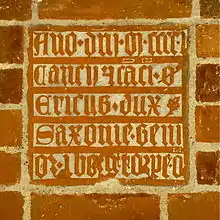 | c.1330 | 1370–1401 | 1401 | Saxe-Bergedorf-Mölln | Unmarried | Determined to enter to clergy, has to resign to succeed his brothers. He also left no descendants, which allowed the Saxe-Ratzeburg-Lauenburg line to reunite Saxe-Lauenburg. |
| Rudolph III | .jpg.webp) | 1378 | 15 May 1388 – 11 June 1419 | 11 June 1419 | Saxe-Wittenberg and Electorate of Saxony | Anna of Meissen 1387/89 three children Barbara of Legnica March 1396 two children | Left no male descendants. he was succeeded by his brother, Albert. |
| In 1401 Saxe-Ratzeburg-Lauenburg inherited Saxe-Bergedorf-Mölln from the Ascanian Elder Lauenburg line there extinct upon Eric IV's death. The reunited duchy continued under the old name of Saxe-Lauenburg. | |||||||
| Eric III | 1354 | 1401–1411/12 | 21 June 1411/12 | Saxe-Lauenburg | Sophia of Brunswick-Lüneburg 8 April 1373 ten children | In 1401 reunited Saxe-Lauenburg. | |
| Eric V | after 1373 | 1411/12–1436 | 1436 | Saxe-Lauenburg | Elisabeth of Holstein-Rendsburg 1404 no children Elisabeth of Weinsberg before 1422 one child |
Ruled jointly. The numberings here lead to some confusion, as not all genealogists of the House of Ascania count John IV in the list of Dukes of Saxe-Lauenburg, numbering John V (John IV's nephew) as John IV. | |
| John IV | after 1373 | 1411/12–1414 | 1414 | Saxe-Lauenburg | Unmarried | ||
| Albert IV | .jpg.webp) | 1375/80 | 11 June 1419 – (before 12 November) 1422 | before 12 November 1422 | Saxe-Wittenberg and Electorate of Saxony | Euphemia of Oleśnica 14 January 1420 no children | Left no male descendants, which led the Ascanian Saxe-Wittenberg line to extinction. |
| The Ascanian Dynasty continued in Saxe-Lauenburg until 1689, but after the Lauenburgish line had finally lost the Saxon Electorate to the Wittenberg line in 1356 and failed to obtain the succession in the Electorate after 1422, recognition of the Dukes of Saxe-Lauenburg as Dukes of Saxony waned. To follow the remnant House of Ascania in Saxe-Lauenburg, follow this table. For the following Electors of Saxony, see below the House of Wettin. | |||||||
| Bernard IV | 1385/93 | 1436–1463 | 16 July 1463 | Saxe-Lauenburg | Adelaide of Pomerania-Stolp 1428 two children | ||
| John V | 18 July 1439 | 1463–1507 | 15 August 1507 | Saxe-Lauenburg | Dorothea of Brandenburg 12 February 1464 twelve children | Sometimes numbered John IV. He is somestime confused with his uncle, John IV (Eric V and Bernard IV's brother) and a son of his own (John IV, Bishop of Hildesheim). | |
| Magnus I |  | 1 January 1470 | 1507–1543 | 1 August 1543 | Saxe-Lauenburg | Catherine of Brunswick-Wolfenbüttel 20 November 1509 Wolfenbüttel six children | |
| Francis I | 1510 | 1543-1571 | 19 March 1581 | Saxe-Lauenburg | Sibylle of Saxony 8 February 1540 Dresden nine children | In 1571 – highly indebted – Francis I resigned in favour of his eldest son Magnus II, who had promised to redeem the pawned ducal demesnes with funds he gained as Swedish military commander and by his marriage to a Swedish princess. | |
| Magnus II | 1543 | 1571–1573 | 14 March 1603 | Saxe-Lauenburg | Sophia of Sweden 4 July 1568 Stockholm one child | Eldest son of Francis I. He didn't pay the debts he promised to pay and led to war with his father and brothers. Two years later they deposed Magnus II and Francis I re-ascended. Magnus' violent and judicial attempts to regain the duchy failed. In 1588 he was imprisoned for the remainder of his life. | |
| Francis I | 1510 | 1573–1581 | 19 March 1581 | Saxe-Lauenburg | Sibylle of Saxony 8 February 1540 Dresden nine children | Regained the title in 1573, after pushing back Magnus II. | |
| Francis II |  | 10 August 1547 | 1581–1619 | 2 July 1619 | Saxe-Lauenburg | Margaret of Pomerania-Wolgast 26 December 1574 Wolgast four children Maria of Brunswick-Wolfenbüttel 10 November 1582 Wolfenbüttel fourteen children | Brother of Magnus II. Vice-regent from 1578, administrator from 1581. Joint rule with his brother Maurice between 1581 and 1612. Father of Augustus and Julius Henry. |
| Maurice | 1551 | 1581–1612 | 2 November 1612 | Saxe-Lauenburg | Katharina von Spörck 1581 (annulled 1582) no children | Ruled jointly with his brother Francis II. | |
| Augustus | 17 February 1577 | 1619–1656 | 18 January 1656 | Saxe-Lauenburg | Elisabeth Sofie of Holstein-Gottorp 5 March 1621 Husum six children Catherine of Oldenburg 4 June 1633 no children | Left no male descendants; he was succeeded by his half-brother Julius Henry. | |
| Julius Henry |  | 9 April 1586 | 1656–1665 | 20 November 1665 | Saxe-Lauenburg | Anna of East Frisia 17 March 1617 Grabow no children Elisabeth Sophia of Brandenburg 4 June 1633 Toužim one son Anna Magdalena of Lobkowicz 18 August 1632 Vienna six children | |
| Francis Erdmann | 25 February 1629 | 1665–1666 | 30 July 1666 | Saxe-Lauenburg | Sibylle Hedwig of Saxe-Lauenburg 1654 no children | Left no descendants; He was succeeded by his brother Julius Francis. | |
| Julius Francis |  | 16 September 1641 | 1666–1689 | 30 September 1689 | Saxe-Lauenburg | Hedwig of the Palatinate-Sulzbach 9 April 1668 Sulzbach two children | |
The male line of the Saxe-Lauenburgish Ascanians was extinguished in 1689, after Julius Francis' death. In spite of having left two daughters to inherit the rights to the duchy, the House of Welf usurped the duchy, preventing the succession of the legitimate heiress, Anna Maria Franziska of Saxe-Lauenburg, and resucceeded with its Brunswick and Lunenburg-Celle line. In fact, George William, Duke of Brunswick-Lüneburg was a great-great-grandson of Magnus I through his great-grandmother Dorothea of Saxe-Lauenburg. His descendants became Monarchs of Great Britain from 1714 on. In 1814, after being deposed by various occupations in the Napoleonic Wars, George III's son, Regent George agreed to pass Saxe-Lauenburg to his Danish cousin in a general territorial realignment at the Congress of Vienna. This cousin was Frederick VI of Denmark, who changed the official colours of Saxe-Lauenburg to red and gold. The duchy changed hands again when, in 1865, Christian IX of Denmark was deposed in Second Schleswig War and resigned by Treaty of Vienna; Saxe-Lauenburg passed to William I of Prussia, to whom the Estates of Saxe-Lauenburg offered the ducal throne. The coat-of-arms of Saxe-Lauenburg was changed to the colours red and silver, with a border in the Prussian colours of black and white. Both duke and estates decided to merge Saxe-Lauenburg into Prussia, as district Duchy of Lauenburg, with effect from 1 July 1876.
House of Wettin
The Ascanian line of Saxe-Wittenberg became extinct with the death of Elector Albert III in 1422, whereafter Emperor Sigismund bestowed the country and electoral dignity upon Margrave Frederick IV of Meissen, who had been a loyal supporter in the Hussite Wars. Late Albert's Ascanian relative Duke Eric V of Saxe-Lauenburg protested in vain. Frederick, now one of the seven Prince-electors, was a member of the House of Wettin, which since 1089 had ruled over the adjacent Margraviate of Meissen up the Elbe river, established under Emperor Otto I in 965, and since 1242 also over the Landgraviate of Thuringia. Thus, in 1423, Saxe-Wittenberg, the Margraviate of Meissen and Thuringia were united under one ruler, and the unified territory. gradually received the name of (Upper) Saxony (or simply Saxony).
Partitions of Saxony under Wettin rule
| Electorate of Saxony (1422–1464) | |||||||||||||||||||||||||||
| Albertine territories | Ernestine territories | ||||||||||||||||||||||||||
| Albertine Duchy of Saxony (1464–1547) |
Ernestine Electorate of Saxony (1464–1547) | ||||||||||||||||||||||||||
| Coburg (1542–53) |
|||||||||||||||||||||||||||
| Albertine Electorate of Saxony (1547–1806) |
Ernestine Duchy of Saxony (1547–1554) | ||||||||||||||||||||||||||
| Coburg & Eisenach (1554–66) |
Gotha (1554–65) |
Weimar (1554–66) | |||||||||||||||||||||||||
| Ernestine Duchy of Saxony (1566–72) | |||||||||||||||||||||||||||
| Coburg-Eisenach (1572–1638) (Divided in Coburg and Eisenach 1596-1633) |
Weimar (1572–1741) | ||||||||||||||||||||||||||
| Altenburg (1603–1672) | |||||||||||||||||||||||||||
| Eisenach (1640–44) |
Gotha (1640–72) | ||||||||||||||||||||||||||
| Zeitz (1656–1718) |
Merseburg (1656–1738) |
Weissenfels (1656–1746) (Renamed Querfurt 1680-1739) |
|||||||||||||||||||||||||
| Marksuhl (1662–71) |
Jena (1662–90) | ||||||||||||||||||||||||||
| Eisenach (1662-1741) |
Gotha & Altenburg (1672–1826) | ||||||||||||||||||||||||||
| Merseburg-Lauchstädt (1684–90) |
Weissenfels-Barby (1680–1739) |
Eisenberg (1675–1707) |
Meiningen (1675–1918) |
Saalfeld (1675–99) |
Coburg (1675–99) |
Römhild (1675–1710) | |||||||||||||||||||||
| Zeitz-Pegau-Neustadt (1699–1713) |
Merseburg-Zörbig (1691–1715) |
Merseburg-Spremberg (1694–1731) |
Coburg-Saalfeld (1699–1826) | ||||||||||||||||||||||||
| Weissenfels-Dahme (1711–15) |
|||||||||||||||||||||||||||
| Hildburghausen (1675–1826) renamed Altenburg (1826–1918) |
|||||||||||||||||||||||||||
| Weimar-Eisenach (1741–1918) (Personal union between 1741 and 1809 Elevated to Grand Duchy 1815) | |||||||||||||||||||||||||||
| Kingdom of Saxony (1806–1918) | |||||||||||||||||||||||||||
| Prussian Province of Saxony (1815–1918) |
Coburg-Gotha (1826–1918) | ||||||||||||||||||||||||||
Table of rulers
| Ruler | Born | Reign | Death | Ruling part | Consort | Notes | |
|---|---|---|---|---|---|---|---|
| Frederick I the Warlike (Friedrich der Streitbare) | .jpg.webp) | 11 April 1370 | 6 January 1423 – 4 January 1428 | 4 January 1428 | Duchy of Saxony and Electorate of Saxony | Catherine of Brunswick-Lüneburg 7 February 1402 seven children | After the Wittenberg line of the Ascanians became extinct, the Electorate was given to Frederick, Margrave of Meissen and Landgrave of Thuringia, of the House of Wettin. |
| Frederick II the Gentle (Friedrich der Sanftmütige) | .jpg.webp) | 22 April 1412 | 4 January 1428 – 7 September 1464 | 7 September 1464 | Duchy of Saxony and Electorate of Saxony | Margaret of Austria 3 June 1431 Leipzig eight children | Son of Frederick I. Ruled jointly in Saxony with his brothers, but was the sole holder of the Electorate. Father of Ernest and Albert, founders of the Ernestine and Albertine Saxon lines. |
| Ernest I (Ernst) | .jpg.webp) | 24 March 1441 | 7 September 1464 – 26 August 1486 | 26 August 1486 | Ernestine Electorate of Saxony | Elisabeth of Bavaria-Munich 25 November 1460 Leipzig seven children | Son of Frederick II. He was the founder and progenitor of the Ernestine line of Saxon princes. |
| Albert III the Bold | 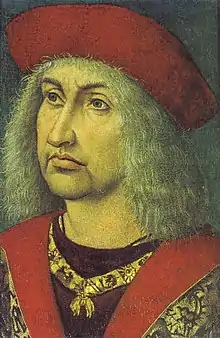 | 27 January 1443 | 1464–1500 | 12 September 1500 | Albertine Duchy of Saxony | Sidonie of Poděbrady 11 November 1464 Cheb nine children | Son of Frederick II. He was the founder and progenitor of the Albertine line of Saxon princes. |
| Frederick III the Wise (Friedrich der Weise) |  | 17 January 1463 | 26 August 1486 – 5 May 1525 | 5 May 1525 | Ernestine Electorate of Saxony | Unmarried | Son of Ernest. Protector of Martin Luther, but a lifelong Catholic. Left no male descendants. Ruled jointly with his brother John, who succeeded him. |
| George I the Bearded | .jpg.webp) | 27 August 1471 | 1500–1539 | 17 April 1539 | Albertine Duchy of Saxony | Barbara of Poland 21 November 1496 Dresden ten children | Proponent of Catholic Reform and a staunch opponent of Martin Luther. Left no surviving male descendants. He was succeeded by his brother Henry. |
| John I the Steadfast (Johann der Beständige) |  | 30 June 1468 | 5 May 1525 – 16 August 1532 | 16 August 1532 | Ernestine Electorate of Saxony | Sophie of Mecklenburg 1 March 1500 Torgau one child Margaret of Anhalt-Köthen 13 November 1513 Torgau four children | Co-regent of his brother Frederick III (26 August 1486 - 5 May 1525), with his own residence at Weimar since 1513. Established Lutheranism in his territories in 1527. |
| John Frederick I the Magnanimous (Johann Friedrich I der Großmütige) |  | 30 June 1503 | 16 August 1532 – 19 May 1547 | 3 March 1554 | Ernestine Electorate of Saxony | Sibylle of Cleves 9 February 1527 Torgau four children | Lost his Electoral dignity and territory to his cousin Maurice after being defeated by the Emperor in the Schmalkaldic War. He was left with some territories as the Duchy of Saxony. After his death the Duchy of Saxony was divided between his three sons. |
| 19 May 1547 – 1554 | Albertine Duchy of Saxony | ||||||
| Henry IV the Pious |  | 16 March 1473 | 1539–1541 | 18 August 1541 | Albertine Duchy of Saxony | Catherine of Mecklenburg 69 January 1541 Marburg nine children | Succeeded his brother George I. He established Lutheranism in Albertine Saxony. |
| Maurice I (Moritz) |  | 21 March 1521 | 1541–1547 | 9 July 1553 | Albertine Duchy of Saxony | Agnes of Hesse 9 January 1541 Marburg two children | Second cousin of John Frederick, grandson of Albert. Though a Lutheran, allied with Emperor Charles V against the Schmalkaldic League. Gained the Electorate for the Albertine line in 1547 after Charles V's victory at the Battle of Mühlberg. Left no male descendants. He was succeeded by his brother Augustus. |
| 4 June 1547 – 9 July 1553 | Albertine Electorate of Saxony | ||||||
| John Ernest I |  | 10 May 1521 | 16 August 1532 – 8 February 1553 | 8 February 1553 | Ernestine Saxe-Coburg | Catherine of Brunswick-Grubenhagen 12 February 1542 Torgau no children | Until 1542, John Ernest was co-regent of his brother, Elector John Frederick I. When John Frederick decided to rule alone, he created the Duchy of Saxe-Coburg for his brother. After his death without descendants, the land reverted to John Frederick. |
| Following their displacement by the Albertines, the Ernestine branch of the Wettins continued to rule in southern Thuringia as "Dukes of Saxony", but their lands eventually split up into many different tiny Ernestine duchies. | |||||||
| Augustus I (August) |
 |
31 July 1526 | 9 July 1553 – 11 February 1586 | 11 February 1586 | Albertine Electorate of Saxony |
Anna of Denmark 7 October 1548 Torgau fifteen children Agnes Hedwig of Anhalt 3 January 1586 Dessau no children |
Brother of Maurice. Recognized as Elector by the ousted John Frederick I in 1554. From 1573 he was also regent for Frederick William, in the Ernestine duchy of Saxe-Weimar. |
| 1573–1586 as regent | Ernestine Saxe-Weimar | ||||||
| John Frederick II |  |
8 January 1529 | 1554–1565 | 19 May 1595 | Ernestine Saxe-Coburg-Eisenach |
Agnes of Hesse 26 May 1555 Weimar no children Elisabeth of the Palatinate-Simmern-Sponheim 12 June 1558 Weimar four children |
Received Saxe-Weimar. In 1565 united his domains with those of his younger brother in Gotha. In 1566 abdicated in favor of his brother John William, who reunited the duchy. |
| 1565–1566 | Ernestine Saxe-Coburg-Eisenach and Saxe-Gotha | ||||||
| John Frederick III the Younger |  | 16 January 1538 | 1554–1565 | 21 October 1565 | Ernestine Saxe-Gotha | Unmarried | Received Saxe-Gotha. However he left its administration to his elder brothers. After his death, his domains were annexed by his elder brother. |
| John William I |  |
11 March 1530 | 1554–1566 | 2 March 1573 | Ernestine Saxe-Weimar |
Dorothea Susanne of the Palatinate-Simmern 15 June 1560 Heidelberg five children |
Received Saxe-Weimar. In 1565 united his domains with those of his younger brother in Gotha. Reunited Saxony in 1566, after the abdication of his older brother. In 1572, the Division of Erfurt divided Saxony once again, between John William and his nephews, sons of John Frederick II. He received once more Saxe-Weimar. |
| 1566–1572 | Ernestine Duchy of Saxony | ||||||
| 1572–1573 | Ernestine Saxe-Weimar | ||||||
| John Casimir |  |
12 June 1564 | 1572–1596 | 16 July 1633 | Ernestine Saxe-Coburg-Eisenach |
Anna of Saxony 16 January 1586 Dresden no children Margaret of Brunswick-Lüneburg 16 September 1599 Coburg no children |
Sons of John Frederick II, ruled jointly. In 1596 divided the land. John Casimir received Saxe-Coburg and John Ernest received Saxe-Eisenach. In 1633 John Casimir died without descendants and John Ernest reunited again Saxe-Coburg-Eisenach. However, as he also didn't have heirs, the duchies were divided between its neighbours Saxe-Altenburg and Saxe-Weimar. |
| 1596–1633 | Ernestine Saxe-Coburg | ||||||
| John Ernest I | .jpg.webp) |
9 July 1566 | 1572–1596 | 23 October 1638 | Ernestine Saxe-Coburg-Eisenach |
Elisabeth of Mansfeld-Hinterort 23 November 1591 Wiener Neustadt one child Christine of Hesse-Kassel 14 May 1598 Rotenburg an der Fulda no children | |
| 1596–1633 | Ernestine Saxe-Eisenach | ||||||
| 1633–1638 | Ernestine Saxe-Coburg-Eisenach | ||||||
| Saxe-Coburg-Eisenach divided between its neighbours Saxe-Altenburg and Saxe-Weimar | |||||||
| Frederick William I |  | 25 April 1562 | 1586–1602 | 7 July 1602 | Ernestine Saxe-Weimar | Sophie of Württemberg 5 May 1583 Weimar six children Anna Maria of the Palatinate-Neuburg 9 September 1591 Neuburg an der Donau six children | After his death, his brother took the land and in the next year divided it with his nephews (sons of Frederick William). |
| Christian I (Christian I) |  | 21 March 1521 | 11 February 1586 – 25 September 1591 | 25 September 1591 | Albertine Electorate of Saxony | Sophie of Brandenburg 25 April 1582 Dresden seven children | |
| Sophie of Brandenburg (regent) |  | 6 June 1568 | 25 September 1591 – c.1601 | 7 December 1622 | Albertine Electorate of Saxony | Christian I 25 April 1582 Dresden seven children | Regent on behalf of her son Christian II. |
| Christian II (Christian II) | .jpg.webp) | 23 September 1583 | c.1601 – 23 June 1611 | 23 June 1611 | Albertine Electorate of Saxony | Hedwig of Denmark 12 September 1602 Dresden no children | |
| John II |  | 22 May 1570 | 1602–1605 | 18 July 1605 | Ernestine Saxe-Weimar | Dorothea Maria of Anhalt 7 January 1593 Altenburg twelve children | Divided Saxe-Weimar with his nephews in 1603, retaining a smaller Saxe-Weimar (sometimes called Saxe-Weimar-Jena). |
| John Philip |  | 25 January 1597 | 1603–1639 | 1 April 1639 | Ernestine Saxe-Altenburg | Elisabeth of Brunswick-Wolfenbüttel 25 October 1618 Altenburg one child |
Received and ruled jointly the newly created Saxe-Altenburg, after the partition of 1603. None of them had male descendants. |
| Frederick |  | 12 February 1599 | 1603–1625 | 24 October 1625 | Ernestine Saxe-Altenburg | Unmarried | |
| John William | 13 April 1600 | 1603–1632 | 2 December 1632 | Ernestine Saxe-Altenburg | Unmarried | ||
| John Ernest I |  | 21 February 1594 | 1605–1626 | 6 December 1626 | Ernestine Saxe-Weimar | Unmarried | Sons of John IV, ruled jointly. In 1640 divided the land. William kept Saxe-Weimar. In 1644 William reunited his own domains with Albert's. After William's death his domains were divided by his four sons. On the other hand, Ernest inherited Saxe-Gotha and reunited it with his wife's (as heiress of Saxe-Altenburg). |
| William I the Great |  |
11 April 1598 | 1626–1644 | 17 May 1662 | Ernestine Saxe-Weimar |
Eleonore Dorothea of Anhalt-Dessau 23 May 1625 Weimar nine children | |
| 1644–1662 | Ernestine Saxe-Weimar and Saxe-Eisenach | ||||||
| Albert IV |  |
27 July 1599 | 1605–1640 | 20 December 1644 | Ernestine Saxe-Weimar |
Dorothea of Saxe-Altenburg 24 June 1633 Weimar no children | |
| 1640–1644 | Ernestine Saxe (-Weimar) -Eisenach | ||||||
| Ernest I the Pious |  |
25 December 1601 | 1605–1640 | 26 March 1675 | Ernestine Saxe-Weimar |
Elisabeth Sophie of Saxe-Altenburg 24 October 1636 Altenburg eighteen children | |
| 1640–1672 | Ernestine Saxe (-Weimar) -Gotha | ||||||
| 1672–1675 | Ernestine Saxe-Gotha-Altenburg | ||||||
| John George I (Johann Georg I) |  | 5 March 1585 | 23 June 1611 – 8 October 1656 | 8 October 1656 | Albertine Electorate of Saxony | Sibylle Elisabeth of Württemberg 16 September 1604 Dresden one child Magdalene Sibylle of Prussia 19 July 1607 Torgau ten children | Brother of Christian II, ruled during the Thirty Years' War, during which he was at times allied with the Emperor and at times with the King of Sweden. |
| Frederick William II |  | 12 February 1602 | 1639–1669 | 22 April 1669 | Ernestine Saxe-Altenburg | Sophie Elisabeth of Brandenburg 18 September 1638 Altenburg no children Magdalene Sibylle of Saxony 11 October 1652 Dresden three children | Brother of John Philip, Frederick and John William. Succeeded his childless brothers. Received part of Saxe-Weimar-Eiesnach in 1638. |
| John George II (Johann Georg II) |
 |
31 May 1613 | 8 October 1656 – 22 August 1680 | 22 August 1680 | Albertine Electorate of Saxony |
Magdalene Sibylle of Brandenburg-Bayreuth 13 November 1638 Dresden three children |
Elector, he also served as regent in Saxe-Altenburg for Frederick William III. The minor duke never reached adulthood. |
| 1669–1672 as regent | Ernestine Saxe-Altenburg | ||||||
| Frederick William III | %252C_by_German_School_of_1662.jpg.webp) | 12 July 1657 | 1669–1672 | 14 April 1672 | Ernestine Saxe-Altenburg | Unmarried | Son of Frederick William II. Died as a minor. His lands were divided between Saxe-Gotha and Saxe-Weimar. |
| Saxe-Altenburg merged in Saxe-Gotha to form Saxe-Gotha-Altenburg | |||||||
| Augustus I |  | 13 August 1614 | 1656–1680 | 4 June 1680 | Albertine Saxe-Weissenfels | Anna Maria of Mecklenburg-Schwerin 23 November 1647 Schwerin twelve children Johanna Walpurgis of Leiningen-Westerburg 29 January 1672 Halle three children | Son of Elector John George I. Inherited Saxe-Weissenfels. After his death, Weissenfels was divided. |
| Christian I |  | 27 October 1615 | 1656–1691 | 18 October 1691 | Albertine Saxe-Merseburg | Christiana of Schleswig-Holstein-Sonderburg-Glücksburg 19 November 1650 Dresden eleven children | Son of Elector John George I. Inherited Saxe-Merseburg. |
| Maurice I |  | 28 March 1619 | 1662–1681 | 4 December 1681 | Albertine Saxe-Zeitz | Sophie Hedwig of Schleswig-Holstein-Sonderburg-Glücksburg 19 November 1650 Dresden two children Dorothea Maria of Saxe-Weimar 3 July 1656 Weimar ten children Sophie Elisabeth of Schleswig-Holstein-Sonderburg-Wiesenburg 14 June 1676 Wiesenburg no children | Son of Elector John George I. Inherited Saxe-Merseburg. |
| Bernard II |  | 14 October 1638 | 1662–1678 | 3 May 1678 | Ernestine Saxe-Jena | Marie Charlotte de la Trémoille 10 June 1662 Paris five children | Son of William I. Received Saxe-Jena. |
| John Ernest II |  |
11 September 1627 | 1662–1683 | 15 May 1683 | Ernestine Saxe-Weimar |
Christine Elisabeth of Schleswig-Holstein-Sonderburg 14 August 1656 Weimar five children |
Son of William I. Received the remaining Saxe-Weimar. He also served as regent for his nephew, John William of Saxe-Jena. |
| 1678–1683 as regent | Ernestine Saxe-Jena | ||||||
| Adolf William |  | 15 May 1632 | 1662–1668 | 21 November 1668 | Ernestine Saxe-Eisenach | Marie Elisabeth of Brunswick-Wolfenbüttel 18 January 1663 Wolfenbüttel five children | Son of William I. Received Saxe-Eisenach. |
| John George I |  |
11 April 1598 | 1662–1671 | 17 May 1662 | Ernestine Saxe-Marksuhl |
Johannetta of Sayn-Wittgenstein 29 May 1661 Wallau nine children |
Son of William I. Received Saxe-Marksuhl. Inherited Eisenach from his minor nephew in 1671, merging Marksuhl in Eisenach. He also served as regent for his nephew William August in Saxe-Eisenach, but after his nephew's death in 1671, he inherited it himself, merging Marksuhl in Eisenach. From 1683 he also became regent for another nephew, John William III, in Saxe-Jena. |
| 1668-1671 as regent 1671–1686 as de facto ruler | Ernestine Saxe-Eisenach | ||||||
| 1683–1686 as regent | Ernestine Saxe-Jena | ||||||
| Saxe-Marksuhl was annexed by Saxe-Eisenach | |||||||
| William August | 30 November 1668 | 1668–1671 | 23 February 1671 | Saxe-Eisenach | Unmarried | Died as a minor. His uncle, as regent, inherited his domain. | |
| Frederick I |  | 15 July 1646 | 1675–1691 | 2 August 1691 | Ernestine Saxe-Gotha-Altenburg | Magdalena Sibylle of Saxe-Weissenfels 14 November 1669 Halle eight children Christine of Baden-Durlach 14 August 1681 Ansbach no children | Son of Ernest II. Received Saxe-Gotha-Altenburg. |
| Albert V | 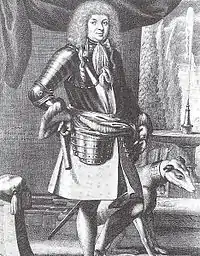 | 24 May 1648 | 1675–1699 | 6 August 1699 | Ernestine Saxe-Coburg | Marie Elisabeth of Brunswick-Wolfenbüttel 18 July 1676 Gotha one child Susanne Elisabeth Kempinsky 24 May 1688 Coburg morganatic no children | Son of Ernest II. Received Saxe-Coburg. Left no male descendants. His lands were annexed by Saafeld. |
| Saxe-Coburg merged in Saxe-Saalfeld to form Saxe-Coburg-Saalfeld | |||||||
| Bernard I |  |
10 September 1649 | 1675–1706 | 27 April 1706 | Ernestine Saxe-Meiningen |
Marie Hedwig of Hesse-Darmstadt 20 November 1671 Gotha seven children Elisabeth Eleonore of Brunswick-Wolfenbüttel 25 January 1681 Schöningen five children |
Son of Ernest I. Received Saxe-Meiningen. He also served as regent, together with his brother Henry, for their nephew, Frederick II. |
| 1691–1693 as regent | Ernestine Saxe-Gotha-Altenburg | ||||||
| Henry |  |
19 November 1650 | 1675–1710 | 13 May 1710 | Ernestine Saxe-Römhild |
Marie Elisabeth of Hesse-Darmstadt 1 March 1676 Darmstadt no children |
Son of Ernest I. Received Saxe-Römhild. Left no descendants and his lands were annexed to Saxe-Coburg-Saalfeld. He also served as regent, together with his brother Henry, for their nephew, Frederick II. |
| 1691–1693 as regent | Ernestine Saxe-Gotha-Altenburg | ||||||
| Saxe-Römhild was annexed by Saxe-Coburg-Saalfeld | |||||||
| Christian |  | 6 January 1653 | 1675–1707 | 28 April 1707 | Ernestine Saxe-Eisenberg | Christiane of Saxe-Merseburg 13 February 1677 Merseburg one child Sophie Marie of Hesse-Darmstadt 9 February 1681 Darmstadt no children | Son of Ernest I. Received Saxe-Eisenberg. Left no male descendants and his lands were annexed to Saxe-Hildburghausen. |
| Saxe-Eisenberg was annexed by Saxe-Hildburghausen | |||||||
| Ernest I |  | 12 June 1655 | 1675–1715 | 17 October 1715 | Ernestine Saxe-Hildburghausen | Sophie of Waldeck 30 November 1680 Arolsen eighteen children | Son of Ernest I of Saxe-Gotha. Received Saxe-Hildburghausen. |
| John Ernest IV |  |
22 August 1658 | 1675–1699 | 17 February 1729 | Ernestine Saxe-Saalfeld |
Sophie Hedwig of Saxe-Merseburg 18 February 1680 Merseburg five children Charlotte Johanna of Waldeck-Wildungen 2 December 1690 Maastricht eight children |
Son of Ernest II. Received Saxe-Saafeld. In 1699 reunified it with Saxe-Coburg, forming Saxe-Coburg-Saalfeld. |
| 1699–1729 | Ernestine Saxe-Coburg-Saalfeld | ||||||
| John William | 28 March 1675 | 1678–1690 | 4 November 1690 | Ernestine Saxe-Jena | Unmarried | Son of Bernard IV. Died as a minor. | |
| Saxe-Coburg-Eisenach divided between its neighbours Saxe-Eisenach and Saxe-Weimar | |||||||
| John George IV (Johann Georg III) |  | 20 June 1647 | 22 August 1680 – 12 September 1691 | 12 September 1691 | Albertine Electorate of Saxony | Anna Sophie of Denmark 9 October 1666 Copenhagen two children | |
| John Adolph I | .jpg.webp) | 2 November 1649 | 1680–1697 | 24 May 1697 | Albertine Saxe-Weissenfels-Querfurt | Johanna Magdalena of Saxe-Altenburg 25 October 1671 Altenburg eleven children Christiane Wilhelmine of Bünau 3 February 1692 Querfurt (morganatic) eleven children | Inherited the remaining Saxe-Weissenfels. |
| Henry | 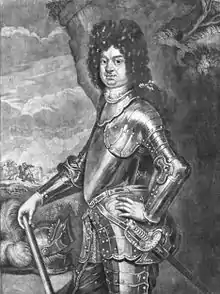 | 29 September 1657 | 1680–1728 | 16 February 1728 | Albertine Saxe-Weissenfels-Barby | Elisabeth Albertine of Anhalt-Dessau 30 March 1686 Dessau seven children | Inherited Saxe-Weissenfels-Barby. |
| Maurice William I |  | 12 March 1664 | 1681–1718 | 15 November 1718 | Albertine Saxe-Zeitz | Marie Amalie of Brandenburg 25 June 1689 Potsdam five children | Left no descendants. After his death Saxe-Zeitz merged in the Electorate. |
| Saxe-Zeitz merged in the Electorate of Saxony | |||||||
| William Ernest I |  |
19 October 1662 | 1683–1728 | 26 August 1728 | Ernestine Saxe-Weimar |
Charlotte Marie of Saxe-Jena 2 November 1683 Eisenach no children |
Ruled jointly. John Ernest was just a nominal ruler; William Ernest had full government. William Ernest also served as regent for his cousin, John William, in Saxe-Jena. |
| 1686-1690 as regent | Ernestine Saxe-Jena | ||||||
| John Ernest III |  | 22 June 1664 | 1683–1707 | 10 May 1707 | Ernestine Saxe-Weimar | Sophie Auguste of Anhalt-Zerbst 11 October 1685 Zerbst five children Charlotte of Hesse-Homburg 4 November 1694 Kassel four children | |
| Philip |  | 26 October 1657 | 1684–1690 | 1 July 1690 | Albertine Saxe-Merseburg-Lauchstädt | Eleonore Sophie of Saxe-Weimar 9 July 1684 Weimar two children Louise Elisabeth of Württemberg-Oels 17 August 1688 Bernstadt one child | Son of Christian. Received from his father the town of Lauchstädt, and ruled it in his father's lifetime. After his death his land returned to is father. |
| John George II |  | 24 July 1665 | 1686–1698 | 10 November 1698 | Ernestine Saxe-Eisenach | Sophie Charlotte of Württemberg 20 September 1688 Kirchheim unter Teck no children | Left no descendants. He was succeeded by his brother. |
| John George IV (Johann Georg IV) |  | 18 October 1668 | 12 September 1691 – 27 April 1694 | 27 April 1694 | Albertine Electorate of Saxony | Eleonore Erdmuthe of Saxe-Eisenach 17 April 1692 Leipzig no children | |
| Christian II | 19 November 1653 | 1691–1694 | 20 October 1694 | Albertine Saxe-Merseburg | Erdmuthe Dorothea of Saxe-Zeitz 14 October 1679 Moritzburg seven children | ||
| Augustus | 15 February 1655 | 1691–1715 | 27 March 1715 | Albertine Saxe-Merseburg-Zörbig | Hedwig of Mecklenburg-Güstrow 1 December 1686 Güstrow eight children | Son of Christian. Received from his brother the town of Zörbig. Left no male descendants. His lands returned to Saxe-Merseburg. | |
| Saxe-Merseburg-Zörbig merged in Saxe-Merseburg | |||||||
| Frederick II |  | 28 July 1676 | 1693–1732 | 23 March 1732 | Ernestine Saxe-Gotha-Altenburg | Magdalena Augusta of Anhalt-Zerbst 7 June 1696 Gotha nineteen children | |
| Frederick Augustus I the Strong (Friedrich August I) |
.jpg.webp) |
12 May 1670 | 27 April 1694 – 1 February 1733 | 1 February 1733 | Albertine Electorate of Saxony |
Christiane Eberhardine of Brandenburg-Bayreuth 20 January 1693 Bayreuth one child |
Brother of John George IV. Converted to Catholicism 1697 in order to compete for the crown of Poland. Took the Polish crown 1697, opposed by Stanisław Leszczyński, in 1704, forced to renounce the throne 1706, returned as monarch 1709 until his death. He also served as regent on behalf of Dukes Christian Maurice, and Maurice Wilhelm in Saxe-Merseburg. |
| 1694–1712 | Albertine Saxe-Merseburg as regent | ||||||
| Erdmuthe Dorothea of Saxe-Zeitz (regent) |  | 13 November 1661 | 1694–1712 | 29 April 1720 | Albertine Saxe-Merseburg | Christian II 14 October 1679 Moritzburg seven children | Served as regent for her sons, Dukes Christian Maurice and Maurice Wilhelm. |
| Christian III Maurice | 7 November 1680 | 1694 | 14 November 1694 | Albertine Saxe-Merseburg | Unmarried | ||
| Maurice William |  | 5 February 1688 | 1712–1731 | 21 April 1731 | Albertine Saxe-Merseburg | Henriette Charlotte of Nassau-Idstein 4 November 1711 Istein one child | Left no descendants. He was succeeded by his uncle, Henry. |
| Henry |  |
2 September 1661 | 1694–1731 | 28 July 1738 | Albertine Saxe-Merseburg-Spremberg |
Elisabeth of Mecklenburg-Güstrow 29 March 1692 Güstrow three children |
Son of Christian. Received from his brother the town of Spremberg. In 1731 succeeded in Saxe-Merseburg, reuniting its original lands with those he unexpectedly inherited. Left no descendants and Saxe-Merseburg merged in the Electorate of Saxony. |
| 1731–1738 | Albertine Saxe-Merseburg | ||||||
| Saxe-Merseburg-Spremberg merged in Saxe-Merseburg | |||||||
| Saxe-Merseburg merged in the Electorate of Saxony | |||||||
| John George |  | 13 July 1677 | 1697–1712 | 16 March 1712 | Albertine Saxe-Weissenfels-Querfurt | Fredericka Elisabeth of Saxe-Eisenach 7 January 1698 Jena seven children | Left no male descendants. He was succeeded by his brother Christian. |
| John William III |  | 17 October 1666 | 1698–1729 | 14 January 1729 | Ernestine Saxe-Eisenach | Amalie of Nassau-Dietz 28 November 1690 Oranjewoud two children Christine Juliane of Baden-Durlach 27 February 1697 Wolfenbüttel seven children Magdalene Sibylle of Saxe-Weissenfels 28 July 1708 Weissenfels three children Marie Christine Felizitas of Leiningen-Dagsburg-Falkenburg-Heidesheim 29 May 1727 Hanau no children | |
| Frederick Henry | .jpg.webp) | 21 July 1668 | 1699–1713 | 18 December 1713 | Albertine Saxe-Zeitz-Pegau-Neustadt | Sophie Angelika of Württemberg-Oels 23 April 1699 Oleśnica no children Anna Fredericka Philippine of Schleswig-Holstein-Sonderburg-Wiesenburg 27 February 1702 Moritzburg two children | Son of Maurice. Received from his brother the towns of Pegau and Neustadt. Left no male descendants. His lands returned to Saxe-Zeitz. |
| Saxe-Zeitz-Pegau-Neustadt merged in Saxe-Zeitz | |||||||
| Ernest Louis I |  | 7 October 1672 | 1706–1724 | 24 November 1724 | Ernestine Saxe-Meiningen | Dorothea Marie of Saxe-Gotha-Altenburg 19 September 1704 Gotha five children Elisabeth Sophie of Brandenburg 3 June 1714 Coburg no children | |
| Frederick | 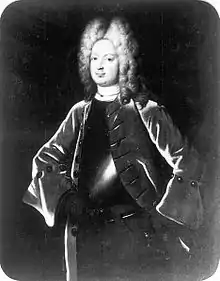 | 20 November 1673 | 1711–1715 | 16 April 1715 | Albertine Saxe-Weissenfels-Dahme | Emilie Agnes Reuss of Schleiz 13 February 1711 Dahme no children | Son of Augustus. His brother John Adolph gave him in 1711 Saxe-Weissenfels-Dahme. After his death Dahme was reabsorbed by Saxe-Weissenfels-Querfurt. |
| Saxe-Weissenfels-Dahme merged in Saxe-Weissenfels-Querfurt | |||||||
| Christian |  | 23 February 1682 | 1712–1736 | 28 June 1736 | Albertine Saxe-Weissenfels-Querfurt | Louise Christine of Stolberg-Stolberg-Ortenberg 12 May 1712 Stolberg no children | Left no male descendants. He was succeeded by his brother John Adolf. |
| Ernest Frederick I |  | 21 August 1681 | 1715–1724 | 9 March 1724 | Ernestine Saxe-Hildburghausen | Sophia Albertine of Erbach-Erbach 4 February 1704 Erbach im Odenwald fourteen children | |
| Sophia Albertine of Erbach-Erbach (regent) |  | 30 July 1683 | 1724–1728 | 4 September 1742 | Ernestine Saxe-Hildburghausen | Ernest Frederick I 4 February 1704 Erbach im Odenwald fourteen children | Regent on behalf of her son. |
| Ernest Frederick II | 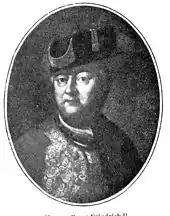 | 17 December 1707 | 1728–1745 | 13 August 1745 | Ernestine Saxe-Hildburghausen | Caroline of Erbach-Fürstenau 19 June 1726 Fürstenau four children | |
| Ernest Louis II |  | 8 August 1709 | 1724–1729 | 24 February 1729 | Ernestine Saxe-Meiningen | Unmarried | Left no descendants. He was succeeded by his brother. |
| George Albert | .jpg.webp) | 19 April 1695 | 1728–1739 | 12 June 1739 | Albertine Saxe-Weissenfels-Barby | Auguste Louise of Württemberg-Oels 18 February 1721 Forst no children | Left no descendants, and his land merged in Saxe-Weissenfels. |
| Saxe-Weissenfels-Barby merged in Saxe-Weissenfels | |||||||
| William Henry |  | 10 November 1691 | 1729–1741 | 26 July 1741 | Ernestine Saxe-Eisenach | Albertine Juliane of Nassau-Idstein 15 February 1713 Idstein no children Anna Sophie Charlotte of Brandenburg-Schwedt 3 June 1723 Berlin no children | Left no descendants: Saxe-Eisenach merged with Saxe-Weimar. |
| Saxe-Eisenach merged in Saxe-Weimar to form Saxe-Weimar-Eisenach | |||||||
| Ernest Augustus I |  |
19 April 1688 | 1728–1741 | 19 January 1748 | Ernestine Saxe-Weimar |
Eleonore Wilhelmine of Anhalt-Köthen 2 November 1683 Nienburg eight children Sophie Charlotte of Brandenburg-Bayreuth 7 April 1734 Bayreuth four children |
Son of John Ernest VI. Reunited under his rule the duchies of Saxe-Weimar and Eisenach. |
| 1741–1748 | Ernestine Saxe-Weimar-Eisenach | ||||||
| Christian Ernest |  | 18 August 1683 | 1729–1745 | 4 September 1745 | Ernestine Saxe-Coburg-Saalfeld | Christiane Fredericka of Koss 18 August 1724 Naitschau (morganatic) no children | Left no descendants. He was succeeded by his brother. |
| Charles Frederick I |  | 18 July 1712 | 1729–1743 | 28 March 1743 | Ernestine Saxe-Meiningen | Unmarried | Brother of Ernest Louis II. Left no descendants. He was succeeded by his uncle. |
| Frederick III |  |
14 April 1699 | 1732–1772 | 10 March 1772 | Ernestine Saxe-Gotha-Altenburg |
Luise Dorothea of Saxe-Meiningen 17 September 1729 Gotha eight children |
He also served as regent for Duke Ernest Augustus II of Saxe-Weimar-Eisenach. |
| 1748–1755 as regent | Ernestine Saxe-Weimar-Eisenach | ||||||
| Frederick Augustus II the Fat' (Friedrich August II) |  | 17 October 1696 | 1 February 1733 – 5 October 1763 | 5 October 1763 | Albertine Electorate of Saxony | Maria Josepha of Austria 20 August 1719 Dresden sixteen children | Son of Frederick Augustus I. Converted to Catholicism 1712. King of Poland 1734–1763. |
| John Adolph II |  | 4 September 1685 | 1736–1746 | 16 May 1746 | Albertine Saxe-Weissenfels-Querfurt | Johannette Antoinette Juliane of Saxe-Eisenach 9 May 1721 Eisenach one child Fredericka of Saxe-Gotha-Altenburg 27 November 1734 Altenburg five children | Left no male descendants. After his death the Duchy was reannexed by the Electorate of Saxony. |
| Saxe-Weissenfels-Querfurt merged in the Electorate of Saxony | |||||||
| Frederick William IV |  | 16 February 1679 | 1743–1746 | 10 March 1746 | Ernestine Saxe-Meiningen | Unmarried | Brother of Ernest Louis I. Left no descendants. He was succeeded by his half-brother. |
| Caroline of Erbach-Fürstenau (regent) |  | 29 September 1700 | 1745–1748 | 7 May 1758 | Ernestine Saxe-Hildburghausen | Ernest Frederick II 19 June 1726 Fürstenau four children | Regent on behalf of her son. |
| Ernest Frederick III |  | 10 June 1727 | 1748–1780 | 23 September 1780 | Ernestine Saxe-Hildburghausen | Louise of Denmark 1 October 1749 Copenhagen one child Christiane Sophie Charlotte of Brandenburg-Bayreuth 20 January 1757 Copenhagen one child Ernestine of Saxe-Weimar 1 July 1758 Bayreuth three children | |
| Francis Josias |  |
25 September 1697 | 1745–1764 | 16 September 1764 | Ernestine Saxe-Coburg-Saalfeld |
Anna Sophie of Schwarzburg-Rudolstadt 2 January 1723 Rudolstadt eight children |
Brother of Christian Ernest. He also served as regent for Duke Ernest Augustus II of Saxe-Weimar-Eisenach. |
| 1748–1755 as regent | Ernestine Saxe-Weimar-Eisenach | ||||||
| Anthony Ulrich |  | 22 October 1687 | 1746–1763 | 27 January 1763 | Ernestine Saxe-Meiningen | Philippine Elisabeth Caesar January 1711 morganatic ten children Charlotte Amalie of Hesse-Philippsthal 26 September 1750 Bad Homburg vor der Höhe eight children | |
| Ernest Augustus II | %2540Schloss_Tiefurt.JPG.webp) | 2 June 1737 | 1755–1758 | 28 May 1758 | Ernestine Saxe-Weimar-Eisenach | Anna Amalia of Brunswick-Wolfenbüttel 16 March 1756 Brunswick two children | |
| Anna Amalia of Brunswick-Wolfenbüttel (regent) | .JPG.webp) | 24 October 1739 | 1758–1775 | 10 April 1807 | Ernestine Saxe-Weimar-Eisenach | Ernest Augustus II 16 March 1756 Brunswick two children | |
| Charles Augustus |  | 3 September 1757 | 1775–1828 | 14 June 1828 | Ernestine Saxe-Weimar-Eisenach | Louise of Hesse-Darmstadt 3 October 1775 Karlsruhe seven children | In 1815 his rank of Duke was elevated to Grand Duke; from 1815 Saxe-Weimar-Eisenach becomes a Grand Duchy. |
| Frederick Christian (Friedrich Christian) |  | 5 September 1722 | 5 October 1763 – 17 December 1763 | 17 December 1763 | Albertine Electorate of Saxony | Maria Antonia of Bavaria 13 June 1747 Munich (by proxy) 20 June 1747 Dresden (in person) nine children | Son of Frederick Augustus II, raised Catholic. |
| Charlotte Amalie of Hesse-Philippsthal (regent) |  | 11 August 1730 | 1763–1779 | 7 September 1801 | Ernestine Saxe-Meiningen | Anthony Ulrich 26 September 1750 Bad Homburg vor der Höhe eight children | |
| Charles William |  | 19 November 1754 | 1779–1782 | 21 January 1782 | Ernestine Saxe-Meiningen | Louise of Stolberg-Gedern 5 June 1780 Gedern no children | Left no descendants. He was succeeded by his brother. |
| Maria Antonia of Bavaria (regent) |  | 18 July 1724 | 17 December 1763 – c.1768 | 23 April 1780 | Albertine Electorate of Saxony | Frederick Christian 13 June 1747 Munich (by proxy) 20 June 1747 Dresden (in person) nine children | Regent on behalf of her son and heir, Frederick Augustus. |
| Frederick Augustus III the Just (Friedrich August III) |  | 23 December 1750 | c.1768 – 20 December 1806 | 5 May 1827 | Albertine Electorate of Saxony | Amalie of Zweibrücken-Birkenfeld 17 January 1769 Mannheim (by proxy) 29 January 1769 Dresden (in person) four children | Son of Frederick Christian. His Electorate ceased with the fall of the Holy Roman Empire in 1806, and he became King of Saxony. |
| In 1806 The Elector of Saxony became King of an independent Kingdom of Saxony. For the Kings that followed the electors, see below the Kingdom of Saxony. To continue the list of the multiple duchies that were contemporaries of this kingdom, follow this table. | |||||||
| Ernest Frederick |  | 8 March 1724 | 1764–1800 | 8 September 1800 | Ernestine Saxe-Coburg-Saalfeld | Sophie Antoinette of Brunswick-Wolfenbüttel 23 April 1749 Wolfenbüttel seven children | |
| Ernest II | 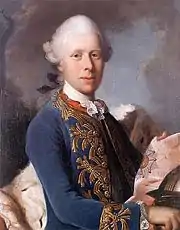 | 30 January 1745 | 1772–1804 | 20 April 1804 | Ernestine Saxe-Gotha-Altenburg | Charlotte of Saxe-Meiningen 21 March 1769 Meiningen four children | |
| George I |  | 4 February 1761 | 1782–1803 | 24 December 1803 | Ernestine Saxe-Meiningen | Louise Eleonore of Hohenlohe-Langenburg 27 November 1782 Langenburg four children | |
| Francis |  | 15 July 1750 | 1800–1806 | 9 December 1806 | Ernestine Saxe-Coburg-Saalfeld | Sophie of Saxe-Hildburghausen 6 March 1776 Hildburghausen no children Augusta Reuss of Ebersdorf 13 June 1777 Ebersdorf ten children | |
| Louise Eleonore of Hohenlohe-Langenburg (regent) |  | 11 August 1763 | 1803–1821 | 30 April 1837 | Ernestine Saxe-Meiningen | George I 27 November 1782 Langenburg four children | Regent on behalf of her son. |
| Bernard II |  | 17 December 1800 | 1821–1882 | 3 December 1882 | Ernestine Saxe-Meiningen | Marie Frederica of Hesse-Kassel 23 March 1825 Kassel two children | |
| Augustus |  | 23 November 1772 | 1804–1822 | 17 May 1822 | Ernestine Saxe-Gotha-Altenburg | Louise Charlotte of Mecklenburg-Schwerin 21 October 1797 Ludwigslust one child Karoline Amalie of Hesse-Kassel 24 April 1802 Kassel no children | Left no male descendants. The land was inherited by his brother Frederick |
| Ernest I |  | 2 January 1784 | 1806–1844 | 29 January 1844 | Ernestine Saxe-Coburg-Saalfeld (1800-1826) Ernestine Saxe-Coburg and Gotha (1826-1844) | Louise of Saxe-Gotha-Altenburg 3 July 1817 Gotha two children Marie of Württemberg 23 December 1832 Coburg no children | Inherited Gotha from Frederick IX, but had to cede Saafeld to Saxe-Meiningen. The duchy changed its name to Saxe-Coburg and Gotha |
| Frederick IV |  | 28 November 1774 | 1822–1825 | 11 February 1825 | Ernestine Saxe-Gotha-Altenburg | Unmarried | Brother of Augustus. Left no male descendants. The land was divided between Saxe-Coburg-Saalfeld and Saxe-Hildburghausen. |
| Saxe-Gotha-Altenburg divided between its neighbours Saxe-Coburg-Saalfeld and Saxe-Hildburghausen | |||||||
| Prince Joseph of Saxe-Hildburghausen (regent) |  | 5 October 1702 | 1780–1787 | 4 January 1787 | Ernestine Saxe-Hildburghausen | Maria Anna Victoria of Savoy 17 April 1738 Paris (annulled 1757) no children | Son of Ernest III. Regent on behalf of Frederick VIII. |
| Frederick |  | 29 April 1763 | 1787–1834 | 29 September 1834 | Ernestine Saxe-Hildburghausen (1787-1826) Ernestine Saxe-Altenburg (1826–1834) | Charlotte Georgine of Mecklenburg-Strelitz 3 September 1785 Hildburghausen twelve children | Inherited Altenburg from Frederick IV, merging it with Hildburghausen. However, Frederick changed the name of the united duchy Saxe-Altenburg. |
| Charles Frederick |  | 2 February 1783 | 1828–1853 | 8 July 1853 | Ernestine Saxe-Weimar-Eisenach | Maria Pavlovna of Russia 3 August 1804 St. Petersburg four children | |
| Joseph |  | 27 August 1789 | 1834–1848 | 25 November 1868 | Ernestine Saxe-Altenburg | Amelia of Württemberg 24 April 1817 Kirchheim unter Teck six children | He implemented several buildings in Altenburg, but his government was considered conservative and resistant to reform; for this, he was forced to abdicate during the civil revolution of 1848. Left no male descendants. He was succeeded by his brother George. |
| Ernest II |  | 21 June 1818 | 1844–1893 | 22 August 1893 | Ernestine Saxe-Coburg and Gotha | Alexandrine of Baden 3 May 1842 Karlsruhe no children | Left no descendants. He was succeeded by his nephews. |
| George |  | 24 July 1796 | 1848–1853 | 3 August 1853 | Ernestine Saxe-Altenburg | Marie Louise of Mecklenburg-Schwerin 7 October 1825 Ludwigslust three children | Brother of Joseph. |
| Charles Alexander |  | 24 June 1818 | 1853–1901 | 5 January 1901 | Ernestine Saxe-Weimar-Eisenach | Sophie of the Netherlands 8 October 1842 The Hague four children | |
| Ernest I |  | 16 February 1826 | 1853–1908 | 7 February 1908 | Ernestine Saxe-Altenburg | Agnes of Anhalt-Dessau 28 April 1853 Ludwigslust two children | Left no male descendants. He was succeeded by his nephew. |
| George II |  | 2 April 1826 | 1882–1914 | 25 June 1914 | Ernestine Saxe-Meiningen | Charlotte of Prussia 18 May 1850 Berlin four children Feodora of Hohenlohe-Langenburg 23 October 1858 Langenburg three children Ellen Franz 18 March 1873 Liebenstein (morganatic) no children | |
| Alfred | 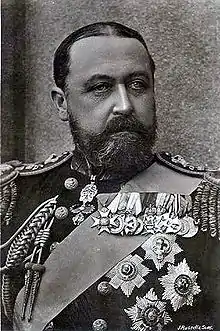 | 6 August 1844 | 1893–1900 | 30 July 1900 | Ernestine Saxe-Coburg and Gotha | Maria Alexandrovna of Russia 23 January 1874 St Petersburg six children | Son of Prince Albert of Saxe-Coburg and Gotha and Queen Victoria. |
| Charles Edward |  | 19 July 1884 | 1900–1918 | 6 March 1954 | Ernestine Saxe-Coburg and Gotha | Victoria Adelaide of Schleswig-Holstein 11 October 1905 Schleswig five children | Son of Prince Leopold, Duke of Albany; Nephew of Alfred. Monarchy abolished in 1918. |
| William Ernest |  | 10 June 1876 | 1901–1918 | 24 April 1923 | Ernestine Saxe-Weimar-Eisenach | Caroline Reuss of Greiz 30 April 1903 Bückeburg no children Feodora of Saxe-Meiningen 14 January 1910 Meiningen four children | Grandson of Charles Alexander, as son of Charles Augustus, Hereditary Grand Duke of Saxe-Weimar-Eisenach. Monarchy abolished in 1918. |
| Ernest II |  | 31 August 1871 | 1908–1918 | 22 March 1955 | Ernestine Saxe-Altenburg | Adelaide of Schaumburg-Lippe 17 February 1898 Bückeburg (annulled 1920) four children Maria Triebel 15 July 1934 Trockenborn-Wolfersdorf (morganatic) no children | Grandson of George III, as son of Prince Moritz of Saxe-Altenburg. Monarchy abolished in 1918. |
| Bernard III | .jpg.webp) | 1 April 1851 | 1914–1918 | 16 January 1928 | Ernestine Saxe-Meiningen | Charlotte of Prussia 18 February 1878 Berlin two children | Monarchy abolished in 1918. |
Kingdom of Saxony
The Holy Roman Empire came to an end in 1806. The Elector of Saxony, allied to Napoleon I, anticipated its dissolution by becoming the ruler of an independent Kingdom of Saxony in 1806.
| Ruler | Born | Reign | Death | Ruling part | Consort | Notes | |
|---|---|---|---|---|---|---|---|
| Frederick Augustus I the Just (Friedrich August I) |  | 23 December 1750 | 20 December 1806 – 5 May 1827 | 5 May 1827 | Kingdom of Saxony | Amalie of Zweibrücken-Birkenfeld 17 January 1769 Mannheim (by proxy) 29 January 1769 Dresden (in person) four children | In 1806 became king of the newly independent Kingdom of Saxony. Also Duke of Warsaw 1807–1813. Left no male descendants. He was succeeded by his brother. (The numbering resets in this point). |
| Anthony the Kind (Anton der Gütige) |  | 27 December 1755 | 5 May 1827 – 6 June 1836 | 6 June 1836 | Kingdom of Saxony | Maria Carolina of Savoy 29 September 1781 Stupinigi (by proxy) 24 October 1781 Dresden (in person) no children Maria Theresa of Austria 8 September 1787 Florence (by proxy) 18 October 1787 Dresden (in person) four children | Left no male descendants. He was succeeded by his nephew. |
| Frederick Augustus II (Friedrich August II) |  | 18 May 1797 | 6 June 1836 – 9 August 1854 | 9 August 1854 | Kingdom of Saxony | Maria Carolina of Austria 26 September 1819 Vienna (by proxy) 7 October 1819 Dresden (by person) no children Maria Anna of Bavaria 24 April 1833 Dresden no children | Son of Prince Maximilian of Saxony. Left no descendants. He was succeeded by his brother. |
| John (Johann I) | 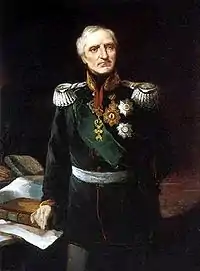 | 12 December 1801 | 9 August 1854 – 29 October 1873 | 29 October 1873 | Kingdom of Saxony | Amalie Auguste of Bavaria 10 November 1822 Munich (by proxy) 21 November 1822 Dresden (in person) nine children | Became a subordinate ruler in the German Empire after the Unification of Germany in 1871. |
| Albert the Good (Albrecht I) |  | 23 April 1828 | 29 October 1873 – 19 June 1902 | 19 June 1902 | Kingdom of Saxony | Carola of Sweden 18 June 1853 Dresden no children | |
| George (Georg) |  | 8 August 1832 | 19 June 1902 – 15 October 1904 | 15 October 1904 | Kingdom of Saxony | Maria Anna of Portugal 11 May 1859 Lisbon eight children | |
| Frederick Augustus III (Friedrich August III) |  | 25 May 1865 | 15 October 1904 – 13 November 1918 | 18 February 1932 | Kingdom of Saxony | Louise of Austria 21 November 1891 Vienna (annulled by royal decree in 1903, after her escape from court) seven children | The last King of Saxony. Abdicated voluntarily in the German Revolution of 1918–19.[1] |
Heads of the House of Wettin since 1918
The lineage of the House of Wettin is extant, although the family no longer exercises an official role in Saxony. For heads of republican Saxony, see List of Ministers-President of Saxony.
- King Frederick Augustus III, 1918–1932.
- Margrave Friedrich Christian, 1932–1968.
- Margrave Maria Emanuel, 1968–2012.
- Margrave Albert, 2012 (disputed).
- Margrave Alexander, since 2012 (disputed).
- Margrave Rüdiger, since 2012 (disputed).
- Prince Michael of Saxe-Weimar (b 15 November 1946) since 2012 (disputed (since the death of his own father in 1988, Prince Michael has been the most senior agnate of the House of Wettin).
References
- "Information in English language - Saxony during the Weimar Republic 1918-1933". www.sachsen.de. Archived from the original on 6 April 2016. Retrieved 7 May 2018.
External links
- (in German) House Laws of the Kingdom of Saxony